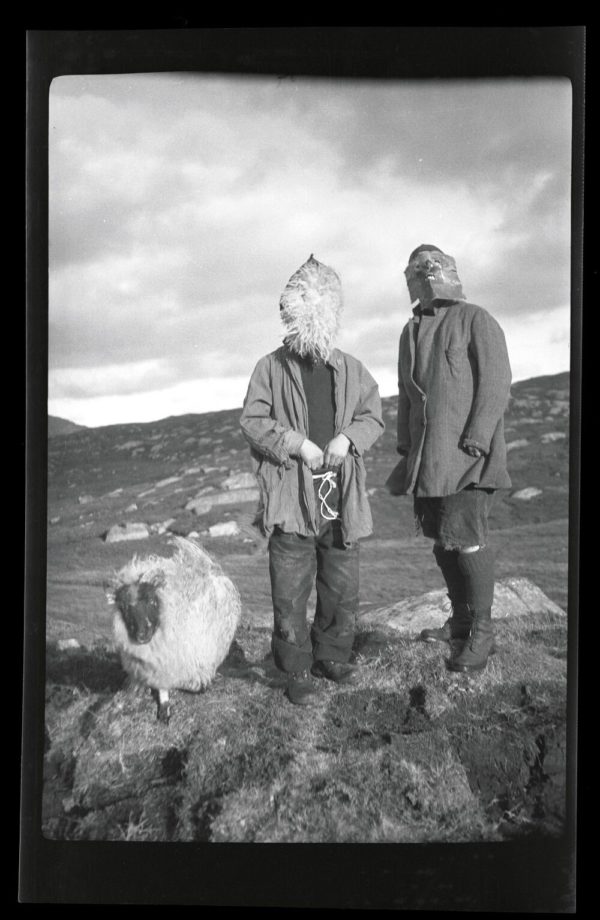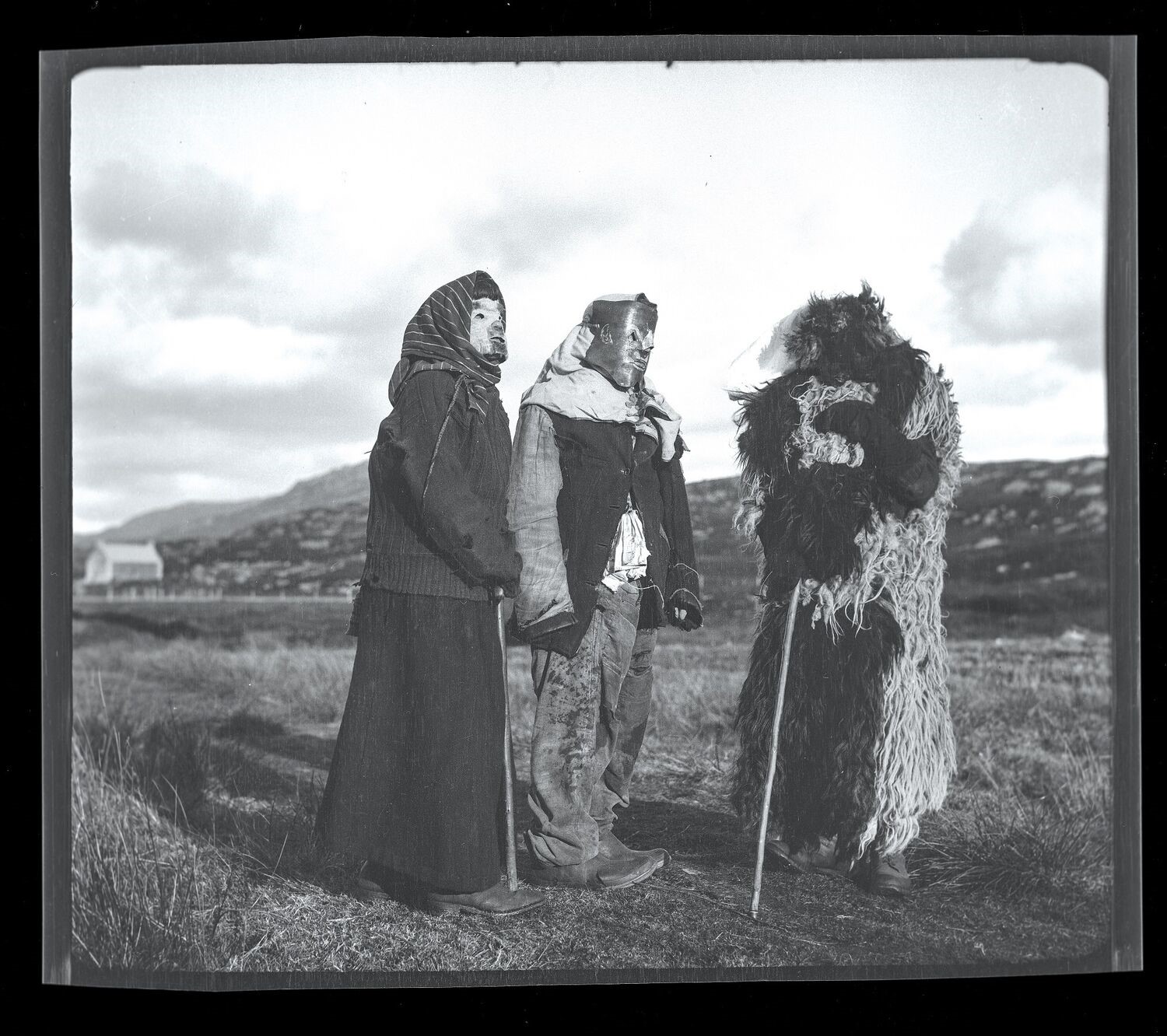The otherworldly magic of a traditional Hebridean Halloween was captured on camera by Margaret Fay Shaw, who amassed a huge collection of Gaelic song, poetry and images when she lived in the west of Scotland from the 1930s onwards. Margaret and her husband, Gaelic scholar John Lorne Campbell, bought the Isle of Canna in 1938, donating it to the Trust in 1981. Their collection, archived at Canna House, includes images and film of Halloween, or Samhain, festivities in South Uist. The roots of Halloween in Scotland go back to the Gaelic festival of Samhain.
‘There are lots of theories about the origins of Samhain, but the overriding idea is that it was a time when the boundary between this world and the other world could be crossed,’ says Canna House archivist and manager Fiona Mackenzie. “That was the origin of dressing up – you were disguising yourself from the spirits and trying to please them, so they’d look after you during winter. Costumes were usually made out of sheepskin or whatever was lying around the croft. Unravelled rope was used to make headpieces. In Margaret’s photos you can see someone dressed entirely in sheepskin. She wrote in the 1930s about watching a boy skin the head of a sheep, leaving the ears intact. He lifted it over his head and looked just like a sheep,’ continued Fiona.
All Hallows Eve

Traditional Samhain costumes © Canna House Photographic Collection.
Fiona adds: “There’s a lot of food involved in Samhain too, both as a feast day for yourself but also to leave food out for the spirits.”
One tradition was to leave a place set at the table to welcome the souls of dead relatives. Food for Halloween (the word comes from the Scots shortening of All Hallows Eve) included a pudding shared by the family, with a silver sixpence, a thimble and a button hidden inside. There were also traditions to do with romance. You could foretell the future of two sweethearts by throwing two nuts into the fire. If they exploded at the same time, it was said ‘they were away together’.
Text and images courtesy of the National Trust for Scotland. For more information on the Trust or to help them protect Scotland’s heritage see: www.nts.org.uk
Main photo: © Canna House Photographic Collection.

